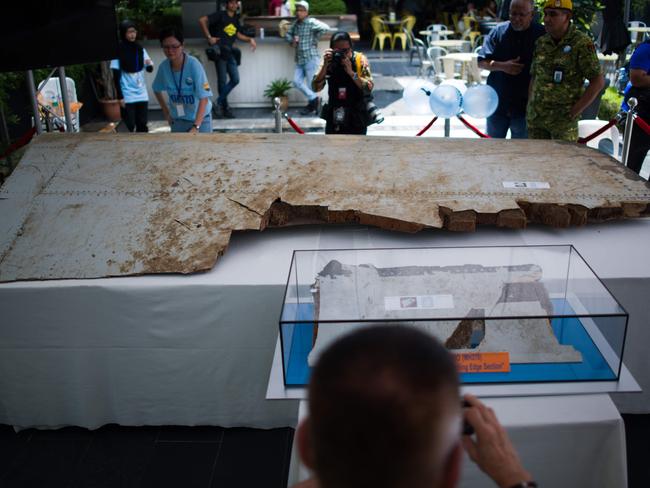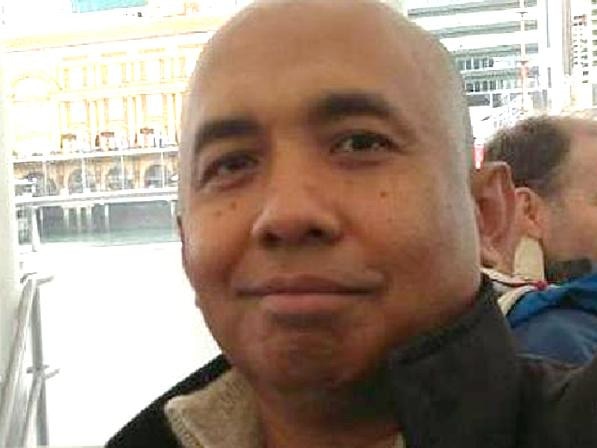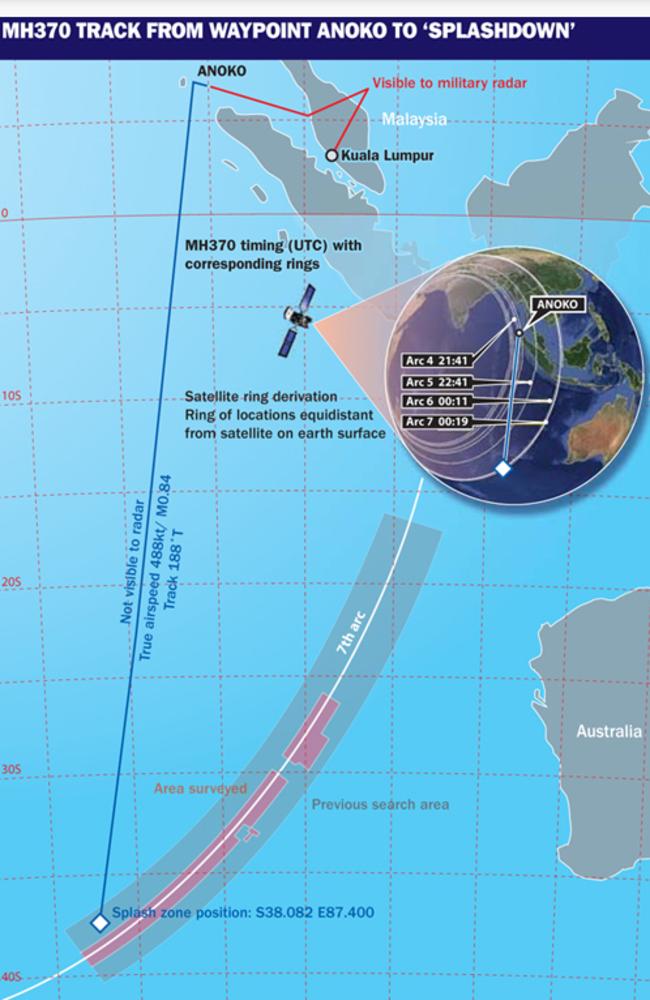MH370: Where to next? Bereaved beg for renewed search into aviation’s greatest mystery
The most extensive search in aviation history failed to find Malaysian Airlines Flight MH370. But the few clues available may still offer tantalising leads for a future search.
Travel Incidents
Don't miss out on the headlines from Travel Incidents. Followed categories will be added to My News.
The most extensive search in aviation history failed to find Malaysian Airlines Flight MH370.
It vanished on March 8, 2014.
There’s never been much to go on.
All we know is shortly after the Boeing 777 took off, it mysteriously changed course.
Its radar transponders and communications systems went off the air.
Was it a deliberate act? Was it the result of an on-board electrical fire? Was the aircraft hacked?
Whatever the case, the end result that nobody could ‘see’ where the aircraft and its 239 passengers and crew was once it passed beyond radar range. And only the ‘black box’ voice and data recorders are likely to contain any real clue as to motive.
But five years on, MH370 didn’t simply vanish.
Malaysia shocks with new MH370 secret vault
Map reveals chilling MH370 evidence
Missing data twist in new MH370 theory
There are a few scattered clues. Some are reliable. Others circumstantial. Many are unverified. Some are simply unreliable.
Investigators have been left with a ‘connect-the-dots’ puzzle, where almost all of the dots are missing. And, despite an extensive and expensive search of the Indian Ocean seabed, nothing has been found.
Now, five years after the aircraft vanished, grieving relatives and friends of the missing are asking: have we been looking in the wrong place all along?
They’ve taken their message to Malaysia’s Prime Minister Mahathir Mohammed. And he’s indicated a willingness to reopen the search — if strong enough evidence is found.
Alternative ideas have been flowing in thick and fast.
None can be confirmed without mounting another search effort.
So what are these ideas? And to where do they point?

ALLURING ALTERNATIVES
The mystery of MH370 has worldwide significance.
How does such a modern aircraft with so many passengers aboard simply ‘disappear’.
So academics, engineers — anyone with a strong interest — have been pouring over what little we have to extract every last clue.
Here’s some of the more recent arguments to emerge:
FORENSIC PSYCHOLOGY: Suspicion immediately fell upon pilot Captain Zaharie Ahmad Shah. How else could the aircraft have been so effectively isolated, and flown on its fateful course? Did the 53-year-old have a grudge? Was he psychologically unsettled? Was he stressed from family and relationship matters?

A News Corp investigation painted Zaharie as a ‘creepy and manic’ man, who openly obsessed over younger women and furious about his country’s political turmoil. He was convinced then opposition leader Anwar Ibrahim had been arrested on trumped-up charges of sodomy. And just hours before MH370 took off, Anwar was conflicted. Was the crashing of MH370 a political statement? If so, why was has no message been found? No suicide note? No recorded statement revealed?
But something very strange was found — files on his personal computer showing a simulated flight westward from Malaysia over the Straits of Malacca, and then south into the Indian Ocean on a course with no return.
Grieving families accuse the Malaysian government of not seriously examining Zaharie’s background or potential motives. They accuse it of seeking to protect the reputation of the nation and its airline. Malaysian authorities, however, continue to express doubt Captain Zaharie’s involvement, although Prime Minister Mahathir Mohammed conceded to 60 Minutes at the weekend he cannot entirely rule it out.
FIRE IN THE SKY: Modern aircraft are complicated machines. They’re full of energy-hungry, delicate electronics and toxic lightweight materials. TWA 800, a Boeing 747, had previously exploded off New York after an electrical short detonated fuel fumes. Did something similar happen to MH370? The aircraft was carrying a load of lithium-ion batteries in its cargo hold. These are notorious for self-igniting when damaged. Was one of these, or another electrical fault of some kind, the cause of a crippling fire aboard the Boeing 777? Was the pilot, co-pilot, crew and passengers incapacitated by the smoke and fumes? It’s a viable idea. But there is absolutely no evidence — at this stage — to help confirm, or deny, it. Only the wreck of MH370 itself can put this particular theory to rest.
CONNECTING THE DOTS
After two long-running deep-sea searchers, the remains of several wrecked ships along with previously undiscovered undersea mountain ranges have been found in the southern Indian Ocean.
But not MH370.
Was the search area, as defined by Australia’s Air Transport Safety Board, the right place?
Had every factor taken into account?
Are there other viable interpretations of the few available dot-like clues?

SMOKING GUN: MH370 didn’t entirely go ‘dark’. One tiny voice continued to be heard: an engine monitoring sensor that would automatically report to overhead satellites. It was a service Malaysian Airlines had not subscribed to. But its satellite-modem automatically ‘phoned home’ at regular intervals, anyway.
It’s the most substantial clue investigators have ever been able to find.
The timing of this ‘ping’. Its sound characteristics. Both are revealing.
From these, engineers have been able to establish how far MH370 was from the receiving satellite at the time each transmission.
These, when pinned to the last known radar plot of the Boeing 777 as it headed wests towards the Andaman Sea and the Indian Ocean beyond — instead of north to Vietnam — produce a steadily expanding bubble showing where it could possibly be.
And it could fly only as far as its speed allowed in the time it could stay aloft.
The ‘handshake’ calls to the Inmarsat 3F1 satellite sitting above the Indian Ocean reveal MH370 continued flying for seven hours. And the surface of the earth the aircraft could have reached in that time is enormous.
So how was this narrowed down?
Possible flight paths taking into account time and speed when pinned to the satellite ‘pings’ pointed several possible locations.
Several possible outcomes are in Asia. But these would have taken MH370 over land, through civilian flight paths and across international borders. All are extensively monitored by radars. And even passenger mobile-phones would have been able to connect to towers far below, leaving their identifiable ‘handshakes’.
None of this was found.
That leaves only the broad expanse of the Indian Ocean.
So, the arcs of each Inmarsat ‘ping’ were plotted on a globe of the world.
Possible and inferred flight speeds and heights were calculated.
And this pointed to a broad arc of the Southern Ocean, west of Perth, as the most likely place the Boeing 777 went down.
Can these be refined further? Is their some other clue or factor, so far overlooked, that can narrow down the search area?
SOUND LOCATION: There’s a worldwide network of sensors in the world’s oceans, established during the cold war, designed to detect secret nuclear bomb tests. But it can also ‘hear’ many other things — volcanoes, exploding meteors, earthquakes — and even crashing aircraft. Two of these hydroacoustic microphones were in a position to sense the crash of MH70. One was at Cape Leeuwin, Western Australia. The other was at Diego Garcia, a secret US military facility in the middle of the Indian Ocean.
Only the Australian microphone recorded any reliable data. The other, muffled by noise from a nearby naval exercise, went blank at a key time.
That this data exists is not new. But there have been new efforts to ‘squeeze out’ any new data from the evidence we have. According to Cardif University mathematician Usama Kadri, enough has been gleaned from reviewing these recording to point in a new direction.
“Our research into these waves has moved on since we first proposed the idea … and we have now been able to identify two locations where the aeroplane could have impacted with the ocean, as well as an alternative route that the plane may have taken …
“Although the proposed route and point of impact is distant from the 7th arc (produced by satellite signal analysis of MH370’s engine reporting modems), we still recommend further studying a number of signals from HA08 … If the signals are related to MH370, this would suggest a new possible impact location in the northern part of the Indian Ocean.”
He also issued an appeal to the US military to supply the missing 25 minutes of data from Dieg Garcia.
DOPPLER SHIFT: Professor Martin Kristensen, an engineer at Aarhaus University in Denmark, has published a new mathematical analysis of MH370’s radar and satellite data, arguing it points to a crash site off Christmas Island.
He used analysis of the way the Boeing 777’s modem ‘pings’ were ‘stretched’ by its course and speed to add another ‘dot’ to the picture. Called Doppler shift, this stretching of a signal can reveal the relative velocity of the modem to the receiving satellite.
“Our best solution leads to an entirely different location agreeing with other data from debris, acoustics and an eyewitness report, providing a clear conclusion where to find the plane,” Kristensen said in his January report.
“We propose instead a new, focused search zone of 3500 km2 centred at (13.279˚ South, 106.964˚ East) with slightly elliptical shape along the 7th arc and a total length of 140km and width of 30km. The probability of finding the plane there is above 90 per cent.”
Professor Kristensen argues his Christmas Island location is supported by drift patterns, the types of barnacles found growing on confirmed pieces of wreckage, as well as the state of their growth.
Originally published as MH370: Where to next? Bereaved beg for renewed search into aviation’s greatest mystery


